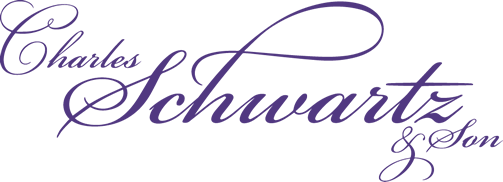As the oldest established jeweler in our nation’s capital, Charles Schwartz & Son has over 125 years of experience as Washington DC’s source for the finest designer jewelry, estate jewelry and custom creations.
Have you ever wondered where diamonds come from, or what the 4 C’s really mean? Our diamond experts here at Charles Schwartz have the answers, and we want to share our expertise with you! Through our Diamond 101 Blog Series we hope to educate our readers and future clients with a crash course in diamonds and the jewelry industry.
What is a Diamond?
The word diamond is derived from the Greek word adamas—meaning unconquerable or indestructible. Due to their incredibly dense, hard nature and scarcity this name seemed fitting—and it still holds true today!
Diamonds are a form of almost pure carbon. Their stunning crystalline structure is due to the immense pressure and heat found 90-120 miles below the earth’s surface. This seemingly hostile environment forces carbon atoms to bond in a unique way; resulting in the breathtaking jewel we all know and love. Overtime, diamonds have been brought to the surface by volcanic eruptions, and nowadays through mining as well. The search for the perfect diamond can be a tricky one, so before we delve into the world of diamond jewelry or even the 4 C’s, let’s go over the anatomy of a diamond.

The Basics
Crown: the top portion of a diamond, responsible for directing light down to the pavilion as it enters the diamond. A diamond’s crown is the most visible portion in today’s jewelry designs.
Culet: the flat face at the bottom of a diamond. Though a diamond’s culet may look like a point to the naked eye, it is in fact flat.
Girdle: the intersection of the crown and pavilion. The girdle is also known as the band that surrounds a diamond and holds it in its setting.
Pavilion: the bottom portion of a diamond. The pavilion’s facets are responsible for redirecting light that enters the diamond through the Crown.
Table: the flat surface on the top of a diamond. The table is the largest facet of a diamond, and measured by averaging four measurements of bezel point to bezel point.

The Facets
Facet: the flat, polished surfaces on a diamond. A modern-day round brilliant diamond has 58 facets—33 on the crown and 25 on the pavilion
Bezel Facets: the kite-shaped facets found between the table and girdle.
Star Facets: the facets that sit adjacent to the table.
Upper Girdle Facets: the lowest facets on the crown, just above the girdle.

Dimensions
Depth: the height of the diamond, measured from the culet to the table
Girdle Diameter: the width, or diameter of a diamond.
Rough diamonds must be cut and polished with extensive care to transform them into cherished treasures and prized possessions. Understanding the anatomy of a diamond can prove useful in the quest for the perfect diamond engagement ring or piece of diamond jewelry. Check back often for more diamond knowledge and advice from the experienced jewelers at Charles Schwartz & Son!
Sources
http://www.heartsonfire.com/history-of-diamonds/what-is-a-diamond.aspx
http://www.heartsonfire.com/guidance/diamond-dictionary.aspx
http://diamondcut.gia.edu/05_diamond_anatomy.html



